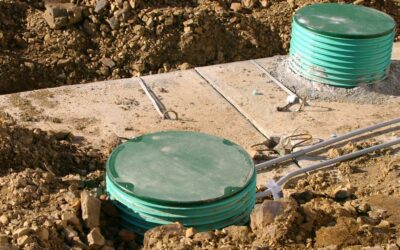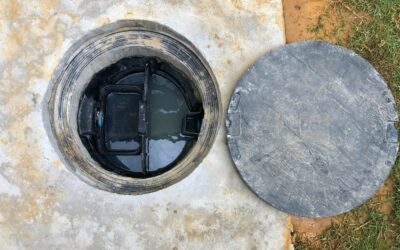In the bustling world of commercial kitchens and restaurants, grease traps play an unsung heroic role. These essential systems prevent fats, oils, and greases (FOG) from clogging up the sewer systems, thus safeguarding both our kitchens and the environment.
But just like any hero, grease traps need a little care to keep them at their best.
The question of “How often should grease traps be cleaned?” isn’t just a matter of routine maintenance; it’s about understanding the direct impact that can occur if grease accumulate on your business’s efficiency and the environment.
This guide aims to break down the essentials of grease trap cleaning, offering clear, actionable advice to ensure your kitchen runs smoothly and stays in compliance with local regulations.
Quick Answer: How Often Should Grease Traps Be Cleaned?
- Recommended Frequency: Every 1 to 3 months.
- Rule of Thumb: Clean when 1/4 full of fats, oils, and greases (FOG).
- Other Factors: May vary with local regulations, trap size, and kitchen volume.
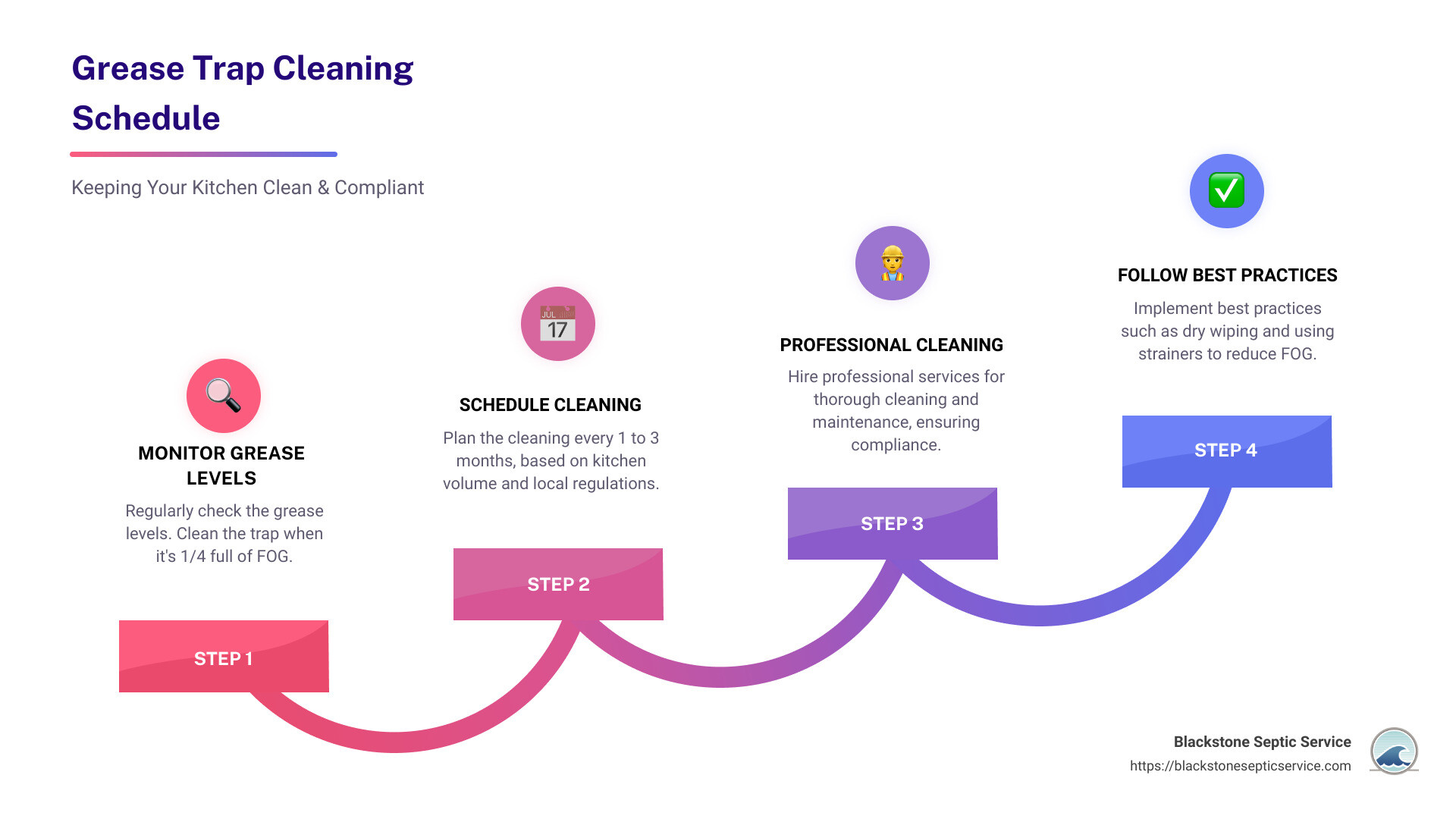
Table of Contents
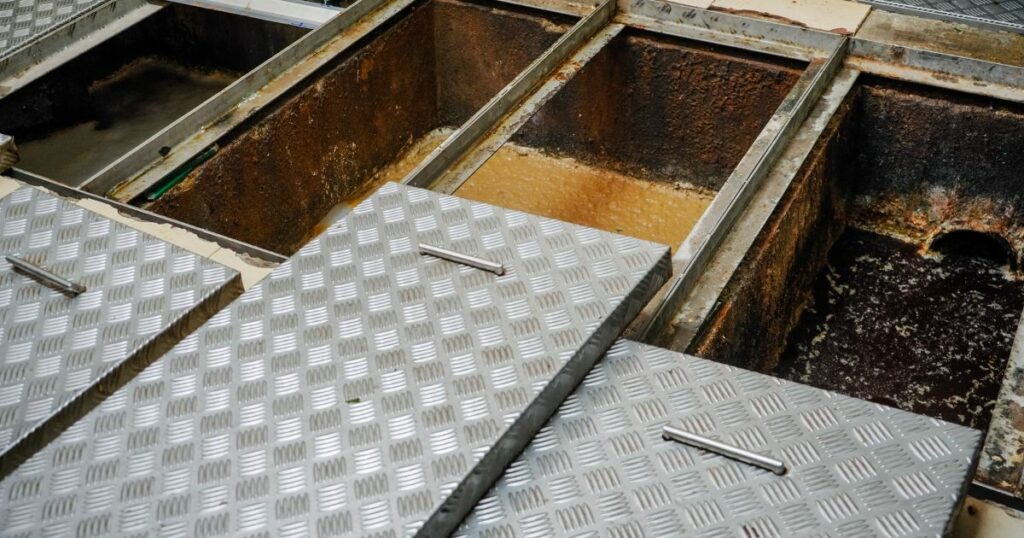
Understanding Grease Traps
When it comes to maintaining a clean and efficient kitchen, understanding the role and types of grease traps is fundamental. Let’s simplify this complex topic.
Function
A grease trap is a critical plumbing device. It’s designed to catch most greases and solids before they enter a wastewater disposal system.
Why does this matter? Well, common wastewater contains small amounts of oils which typically form a scum layer in septic tanks or treatment facilities. However, large amounts of oil, particularly from food preparation, can overwhelm these systems, leading to environmental pollution.
Types
There are mainly two types of grease traps: passive traps and interceptors.
- Passive Grease Traps are smaller units installed indoors, usually under sinks or near dishwashers. They are called ‘passive’ because they use natural water flow to separate grease from water. Despite their size, they play a big role in keeping your drainage system clean but need regular maintenance.
- Interceptors are the heavy-duty cousins of passive traps. They are large tanks buried outside a building and can handle more significant amounts of wastewater and grease. They are ideal for high-volume environments like large restaurants or hotels.
Both types do the same job but on different scales. The choice between them depends on the size of your operation and the amount of grease your kitchen produces.
Signs Your Grease Trap Needs Cleaning
Being aware of the signs that your grease trap needs cleaning is crucial for maintaining a healthy and efficient kitchen. Here’s what you need to look out for:
- Slow Drainage: If water is taking longer than usual to drain, it’s a telltale sign that your grease trap might be getting full. Grease and food particles can clog the system, leading to water backing up.
- Unexplained Smells: A well-maintained grease trap should not emit foul odors. If you notice unpleasant smells coming from the drains or the area around the grease trap, it’s likely time for a cleanout. These odors occur because the fats, oils, and grease (FOG) start to rot when they’re left too long without cleaning.
- Grease Accumulation: Visible signs of grease around the trap or in nearby drains indicate the trap is not functioning properly. This could be due to the trap being full or a sign of improper kitchen practices, like pouring too much grease down the drain.
- Long Time Since Last Cleanup: If it’s been a while since your last grease trap cleaning, you shouldn’t wait for the other signs to show up. Regular maintenance is key to preventing issues. The frequency of cleaning depends on several factors, including the size of your trap and the volume of your kitchen’s grease output. However, waiting too long is never a good idea.
For a more detailed understanding of when and why these cleanings are necessary, referring to the 1/4th rule can provide a guideline based on the capacity of your grease trap and the amount of FOG it collects. This rule suggests that a grease trap should be cleaned when it reaches one-quarter of its capacity to prevent a foul odor from starting and ensure efficiency.
As you move forward with your kitchen operations, keep these signs in mind to ensure your grease trap is cleaned at appropriate intervals, keeping your kitchen safe and compliant.
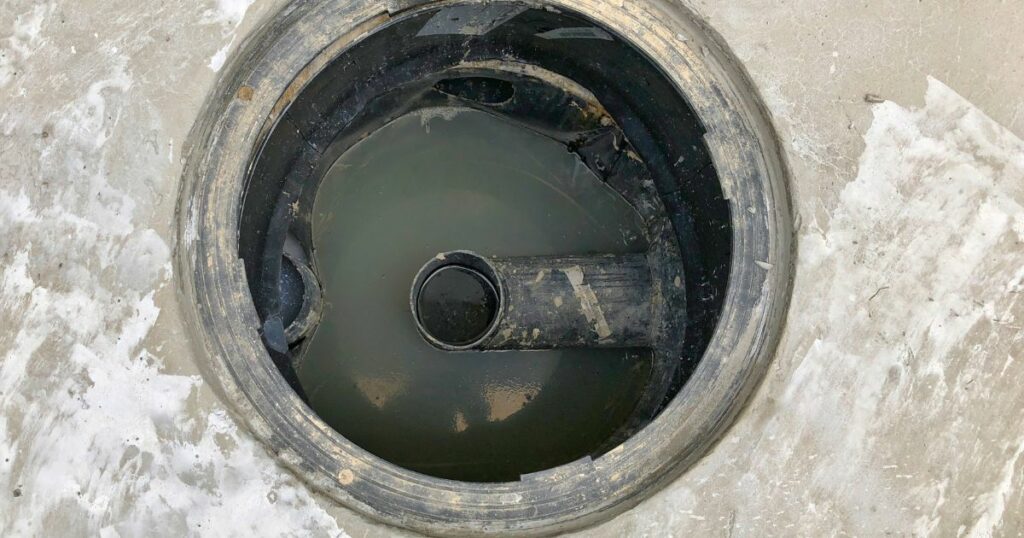
Proper Maintenance of Grease Traps
Maintaining your grease trap isn’t just a once-in-a-blue-moon task. It requires attention and regular care to prevent unpleasant surprises. Here’s how to keep your grease trap in tip-top shape:
- Weekly Scooping: Every week, take a moment to remove the fats, oils, and greases (FOGs) that have accumulated on the top. This can be a simple yet effective step in preventing clogs and maintaining efficiency.
- Monthly Cleaning: Besides the weekly scooping, a more thorough cleaning should be performed monthly. This involves removing the contents of the trap, cleaning the walls, and ensuring that no blockages are forming.
- Leave Water Behind: When cleaning your grease trap, it’s crucial to leave water inside. This helps to maintain the seal and prevent odors from escaping. The water acts as a barrier, keeping the smells at bay.
- Sludge Removal: Over time, sludge will accumulate at the bottom of your grease trap. This needs to be removed regularly to prevent overflows and backups. The frequency of this task can vary depending on the size of your trap and the volume of your kitchen’s grease output.
The key to effective grease trap maintenance is consistency. By incorporating these tasks into your regular cleaning schedule, you can avoid the common pitfalls that come with neglect.
In addition, adopting best practices such as dry wiping plates before washing and using strainers can significantly reduce the amount of grease that ends up in your traps.
By following these guidelines, you not only ensure the longevity of your grease trap but also contribute to a healthier environment and a more efficient kitchen.
How Often Should a Grease Trap Be Cleaned?
When it comes to maintaining a commercial kitchen, understanding how often should grease traps be cleaned is crucial for efficiency, compliance, and environmental protection. The frequency can vary significantly depending on several factors. Here are the key guidelines and considerations to keep in mind when you discover that you need to clean your grease traps.
1 to 3 Months Frequency
A general rule of thumb is that grease traps should be cleaned every one to three months. This range means cleaning often is broad because the exact frequency depends on the volume of fats, oils, and grease (FOGs) your kitchen sends down the drains. High-volume restaurants may need monthly cleanings, while those with less grease waste might only require quarterly service.
The 1/4th Rule
A more precise method to determine the cleaning schedule is the 1/4th rule. This guideline suggests that once a quarter (25%) of the grease trap is filled with FOGS, it’s time for a pump-out. Allowing the trap to get more than one-quarter rule so full can lead to inefficiency, unpleasant odors, and potential blockages. In practice, reaching this level before the one to three-month mark may indicate a need for more frequent servicing.
Massachusetts Legal Regulations
It’s not just about what’s practical or efficient. In Massachusetts, regulations governing grease trap cleaning for sewer systems are overseen by the Massachusetts Department of Environmental Protection (MassDEP) and local health departments. These regulations, subject to periodic updates, encompass various aspects of grease trap maintenance, including cleaning frequency, proper record-keeping, and adherence to disposal guidelines.
It is advisable for businesses to stay informed about the latest regulations by regularly checking with MassDEP and local health departments to ensure adherence to specific and current guidelines.
High-Volume Kitchens
For bustling restaurants and other commercial kitchens, the grease trap can fill up much faster. Places with high seating capacities or that specialize in greasy, fried foods might find their grease traps reaching the 1/4th capacity in less than a month. In such cases, a monthly or even more frequent cleaning schedule is necessary to prevent backups and maintain a pleasant dining environment.
In Conclusion: Determining the cleaning frequency for grease traps is not a one-size-fits-all scenario. It requires a careful assessment of your kitchen’s output, adherence to local laws, and an understanding of the capacity and function of your grease trap.
Best Practices for Grease Trap Maintenance
Maintaining a grease trap is not just a regulatory requirement; it’s a crucial practice to ensure your commercial kitchen runs smoothly without unpleasant interruptions. Following the best practices for grease trap maintenance can save you time, money, and avoid potential legal issues. Here are the essential steps to keep your grease trap functioning efficiently:
Regular Cleaning Schedule
Consistency is key. As recommended by most manufacturers and experts, cleaning your grease trap every 1 to 3 months is a good rule of thumb. However, the exact frequency depends on the size of your trap and the volume of grease your kitchen produces. Implement the 1/4 rule: if your grease trap is filled to a quarter of its capacity with fats, oils, and greases (FOG), it’s time for a cleanout.
Dry Wipe Before Washing
One simple yet effective way to reduce the amount of grease that ends up in your trap is to dry wipe pots, pans, plates, and utensils before washing them. This practice can significantly decrease the volume of grease entering the system. Disposing of these wiped-off residues directly into the trash can make a noticeable difference.
Use Strainers
Installing strainers in sinks and floor drains catches solids and reduces the risk of clogs. This straightforward measure can prevent solid food waste and other debris from entering your grease trap or pipes, making maintenance easier and potentially reducing the need for frequent cleanings.
Recycle Waste Oil
Turning your kitchen’s waste oil into a resource is both eco-friendly and can be economically beneficial. Companies exist that will collect your used cooking oil and recycle it into biodiesel, a renewable energy source. This not only diverts waste from landfills but may also provide you with a financial return or cost savings on waste disposal.
Avoid Pouring Grease Down Drains
Educating your kitchen staff to never pour grease or oil down the sink is fundamental. Even small amounts, if done consistently, can accumulate over time, leading to blockages and odors. Instead, collect the grease in a container and make sure it is properly recycled or disposed of.
By implementing these best practices, you’ll not only ensure your grease trap works more effectively but also contribute to a more sustainable and responsible kitchen operation. A well-maintained grease trap is less likely to cause emergencies, helping your kitchen avoid downtime and maintain a positive reputation.
For detailed insights on maintaining clean drains and preventing clogs, consider reading more about how to maintain clean drains, which complements your grease trap maintenance efforts.
Legal and Environmental Considerations
When it comes to grease trap maintenance, it’s not just about keeping the water lines in your kitchen running smoothly. There are significant legal and environmental considerations to keep in mind. These aspects are critical for any restaurant owner or kitchen manager to understand and adhere to, ensuring that their operations do not negatively impact the wider community and environment.
Local Regulations
First and foremost, local regulations play a crucial role in determining how often should grease traps be cleaned. Different municipalities have their own specific requirements, with some places mandating cleaning every 90 days as a standard.
This is to prevent fats, oils, and grease (FOG) from entering the local wastewater system, which can lead to significant issues if not properly managed. It’s imperative to stay informed about these regulations to avoid potential heavy fines.
For detailed local guidelines, engaging with a professional service like Blackstone Septic Service can ensure compliance and peace of mind.
Environmental Compliance
Beyond legal requirements, there’s an environmental imperative to maintain grease traps efficiently. Improperly managed grease traps can lead to FOG entering waterways, contributing to pollution and harming aquatic life. Moreover, as mentioned in an informative piece on Wikipedia, larger traps don’t necessarily equate to better efficiency and can lead to food waste settling at the bottom, creating additional environmental hazards.
Fatbergs
One of the more alarming consequences of neglected grease trap maintenance is the formation of fatbergs. These are large masses of solid waste, comprised of FOG along with other non-biodegradable items flushed down drains, accumulating in sewer systems.
Not only do they pose significant challenges to wastewater treatment processes, but they also underline the importance of responsible FOG disposal in commercial kitchens.
Public Awareness Campaigns
Raising awareness about the importance of grease trap maintenance and the broader environmental impact of FOG disposal is essential. Several communities have initiated public awareness campaigns to educate both businesses and the general public about the risks associated with improper FOG disposal and the steps that can be taken to mitigate these risks.
These campaigns often highlight the importance of regular grease trap cleaning and the role it plays in environmental stewardship.
Conclusion: Understanding and adhering to local environmental regulations and, ensuring environmental compliance, preventing the formation of fatbergs, and participating in or initiating public awareness campaigns are all crucial elements of grease trap maintenance.
Professional Grease Trap Cleaning Services
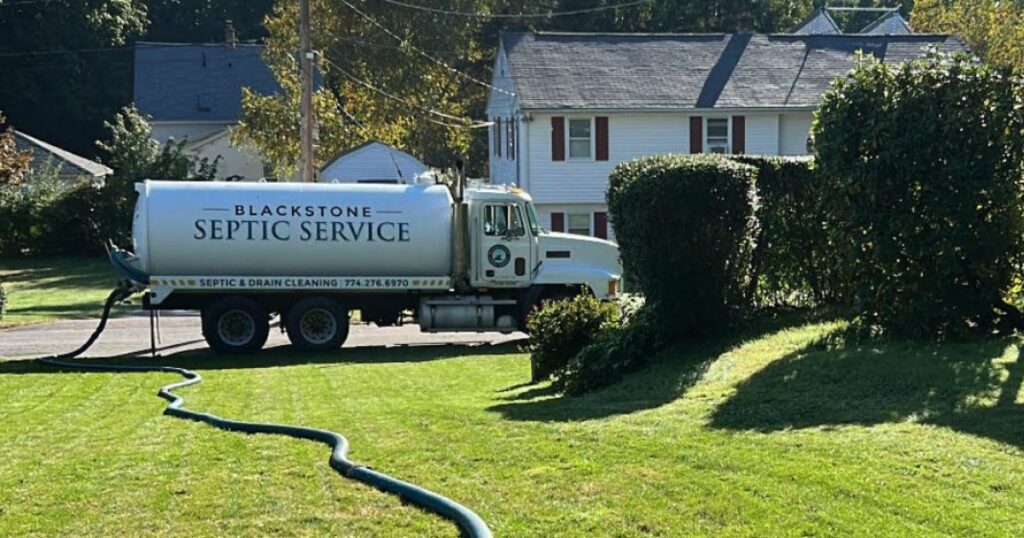
When it comes to keeping your kitchen running smoothly and adhering to local laws, professional grease trap cleaning services are invaluable.
Benefits of Professional Service
- Expertise and Efficiency: Professionals come equipped with the right tools and knowledge to clean your grease trap quickly and thoroughly. This expertise ensures that your business experiences minimal downtime and that the job is done right the first time.
- Compliance with Local Laws: Navigating the maze of local regulations can be daunting. Professional services stay up-to-date with all local laws and regulations, ensuring your establishment remains in compliance and avoids potential fines.
- Environmental Protection: By properly cleaning and disposing of waste, professional services help in preventing grease from entering and clogging the sewage system, which can lead to significant environmental issues. The importance of this was underscored by the U.S. Environmental Protection Agency, identifying grease as a primary cause of sewer blockages in the United States.
Conclusion
Incorporating professional grease trap cleaning services into your maintenance routine is not just a matter of compliance—it’s a smart business decision.
In conclusion, understanding how often should you clean grease traps and adhering to a regular maintenance schedule is crucial. It ensures your kitchen operations run smoothly, helps you stay on the right side of the law, and, most importantly, aids in protecting our environment.
Regular maintenance, when done correctly and professionally, is an investment in your business’s future and the planet’s health.
Hiring professional cleaners like Blackstone Septic Service is a smart choice for any business owner. Not only do they bring expertise and efficiency to the task at hand, but they also ensure that your establishment remains in compliance with local laws and city regulations.
Contact us today if your food establishments’ grease traps need to be properly cleaned. Let’s not overlook the importance of this task.
Frequently Asked Questions about Grease Trap Cleaning
What happens if you don’t clean a grease trap?
Not cleaning a grease trap can lead to a series of unpleasant and costly problems. First, the buildup of fats, oils, and grease (FOG) can cause blockages in your plumbing system, leading to slow drainage or even complete backups. A full grease trap can emit foul odors, affecting the dining experience of your customers and the working conditions of your staff. In extreme cases, neglecting grease trap maintenance can attract pests and create health hazards.
What is the proper maintenance of a grease trap?
Proper maintenance of a grease trap involves a few critical steps. Weekly scooping out of FOG from the surface of the grease trap can significantly reduce the burden on the system. Monthly deep cleaning is also recommended to remove the accumulated sludge and ensure the grease trap fills and functions efficiently.
How often should grease traps be serviced?
The frequency of grease trap cleaning depends on several factors, including the size of the trap, the volume of grease your kitchen produces, and local regulations. Generally speaking, grease traps should be cleaned every 1 to 3 months. However, the “1/4th rule” is a good guideline to follow; clean the grease trap when it reaches a quarter of its capacity to prevent odors and ensure it operates efficiently. High-volume kitchens may need more frequent servicing.
Our Content
Our experienced septic tank specialists have carefully reviewed and edited all of the content to ensure that it meets our high standards for quality and accuracy. At Blackstone Septic Service, our mission is to provide unparalleled expertise and service excellence in the realm of septic system care.
With a dedicated team of professionals committed to delivering the best septic tank treatments for your septic tank system, we specialize in comprehensive services such as routine maintenance of clogged drains, septic tank pumping, remaining grease cleaning, and cleaning for any restaurant’s grease trap. Blackstone Septic Service is a family-owned company with highly trained technicians, with over 75 years of experience in septic tanks.

